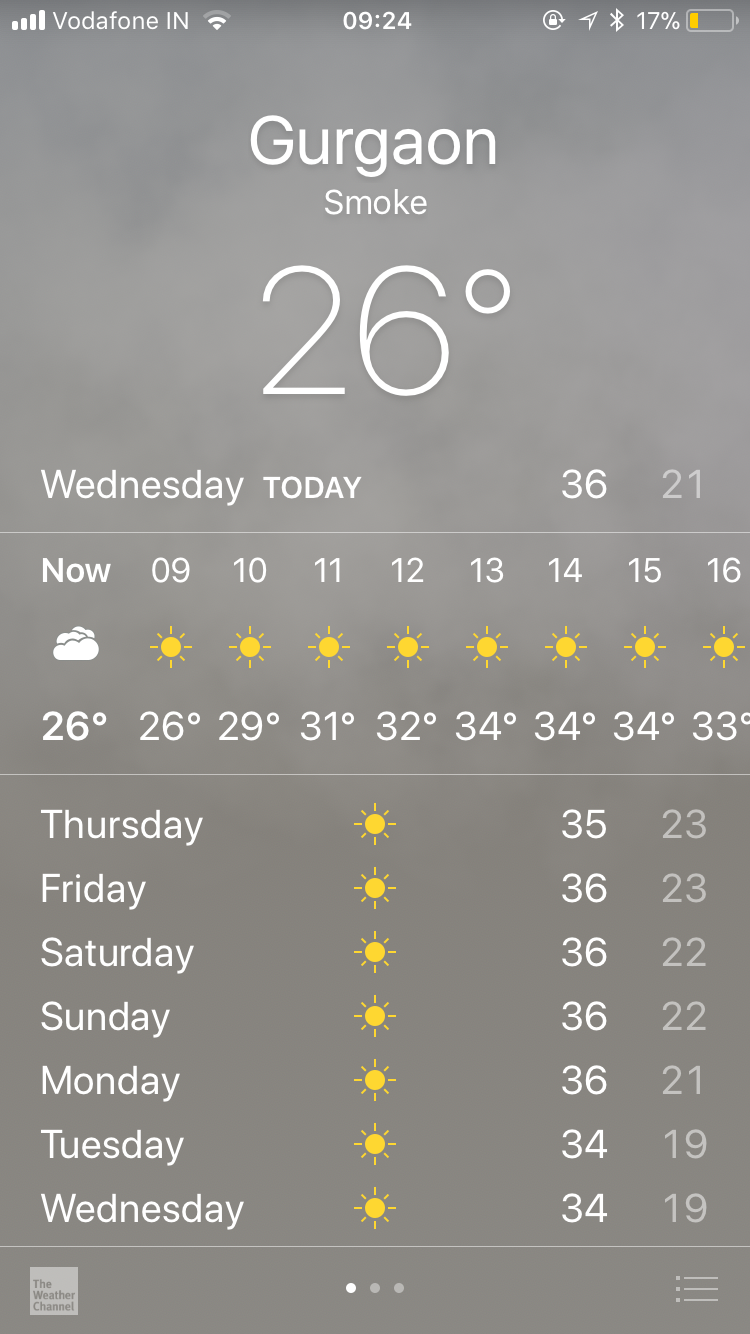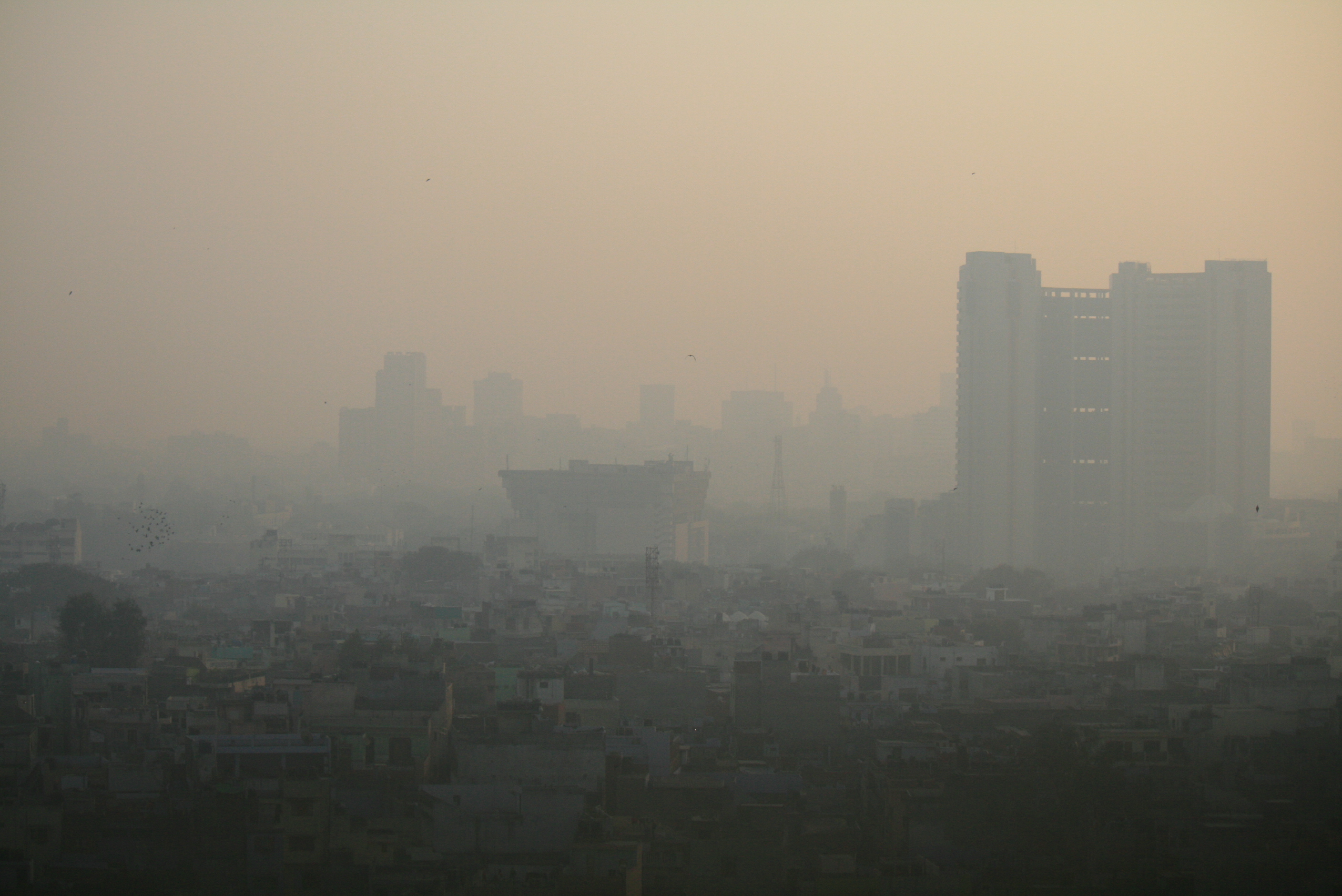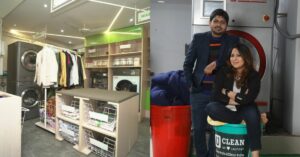If You Live in the Delhi/NCR Region, Here’s How You Can Combat Air Pollution
Each year, Diwali festivities leave the air in the capital thick with deadly smog and suspended particles, posing a serious health threat as they lead to medical problems like breathing issues, allergies and asthma attacks.

Last week, my entire family was unwell. When we visited the paediatrician, he diagnosed my two-year-old with wheezing. “But he doesn’t have any history of respiratory issues,” I said. “This is pollution-induced wheezing. I come across quite a number of cases this time of the year.” the doctor replied.
For many parents in the Delhi/NCR region, come Diwali season, the number of visits to doctors competes with visits to friends and relatives. The air quality dips drastically due to the crop burning that occurs across the agricultural belt of Punjab and Haryana, coupled with the everyday vehicular pollution in Delhi.
The Diwali fireworks actually detonate the pollution bomb in Delhi that has been primed by the pollutants from crop burning and vehicles.

Each year, Diwali festivities leave the air in the capital thick with deadly smog and suspended particles, posing a serious health threat as they lead to medical problems like breathing issues, allergies and asthma attacks. The morning after Diwali usually sets the benchmark for pollution levels.
Just to understand the kind of damage that this pollution can do to us, Dr Kumar highlights the difference he has seen in a person’s lungs over the years, “As a chest surgeon, I have been looking at lungs for the last 25 years and I have noticed a sea change in the colour of lungs. 25 years back, I would mostly see pink lungs in a non-smoker’s body and blackish lungs in a smoker’s body.”
“But these days, even in teenagers who are non-smokers, we have seen blackish area (deposited toxins) in the lungs. It’s a matter of grave concern.”

Photo Source: Wikimedia Commons
He added that those suffering from chronic pulmonary diseases or having weak immunity could develop serious short-term and long-term lung damage,” as reported in SwachhIndia.
In order to ensure that the pollution levels are kept under a check, India’s top court has re-imposed the ban on cracker sales till November 1 in Delhi, which happens to be the 11th worst polluted city in the world according to a report by World Health Organisation (WHO). This is one ranking we must ensure we fall in, soon.
The Graded Response Action Plan, Delhi-NCR’s answer to combat air pollution that assumes apocalyptic proportions during this time of the year, came into force for the first time from October 17, 2017.
Here’s how the implementation will take place:
1. The Central Pollution Control Board (CPCB) will monitor air quality from various stations located across Delhi/NCR. Daily reports will be sent to the Environment Pollution Control Authority (EPCA), the implementing authority of the plan, which will take a decision on the future course of action.
2. If data of any station shows a sudden spike in pollution level, a team will rush to the spot and try to analyse the reason. Accordingly, action will be taken and instructions issued.

Photo Source: Flickr
3. The CPCB has directed all state pollution control boards of NCR states to form teams that will fan out and flag violations. The CPCB has formed around 40 teams that are visiting various parts of Delhi alone.
Some of the other measures that are being undertaken as part of the plan are:
- Stopping construction until the pollution levels normalise
- Shutting down Badarpur power plant for the time being
- Stopping the use of diesel generator sets for a while
- Issuing periodic advisories in newspapers/TV/radio
- Introducing odd and even scheme to regulate pollution from vehicles
- Encouraging and incentivising off-peak travel
- Increasing the frequency of bus and metro services
- Levying a heavy fine on vehicles found to be polluting
- Increasing parking fee by 3-4 times
- Stopping the burning of garbage
- Sweeping roads mechanically
Here’s what you can do:
The Delhi Pollution Control Committee is setting up a control room. People can lodge complaints at 9717593501 and 9717593574 through WhatsApp or the SAMEER app of CPCB. An email address will also be created for easy communication.
While the agencies are trying to do their part in ensuring that the pollution levels are kept at bay, this is something that needs to be the collective response of the residents of Delhi NCR, in order to have a meaningful impact on our air quality, and leave behind a liveable city to our future generations.
Like this story? Or have something to share?
Write to us: [email protected]
Connect with us on Facebook and Twitter.
NEW: Click here to get positive news on WhatsApp!

Similar Story

Laundromats in India? Couple Built Rs 100 Crore Biz Washing Dirty Linen Across 100 Cities
Faridabad’s Arunabh Sinha and his wife Gunjan Taneja launched UClean in 2017 to set up an organised laundromat service in India. Currently, they are spread across 100+ cities and have 350+ outlets across the country.
Read more >
If you found our stories insightful, informative, or even just enjoyable, we invite you to consider making a voluntary payment to support the work we do at The Better India. Your contribution helps us continue producing quality content that educates, inspires, and drives positive change.
Choose one of the payment options below for your contribution-
By paying for the stories you value, you directly contribute to sustaining our efforts focused on making a difference in the world. Together, let's ensure that impactful stories continue to be told and shared, enriching lives and communities alike.
Thank you for your support. Here are some frequently asked questions you might find helpful to know why you are contributing?


This story made me
-
97
-
121
-
89
-
167












